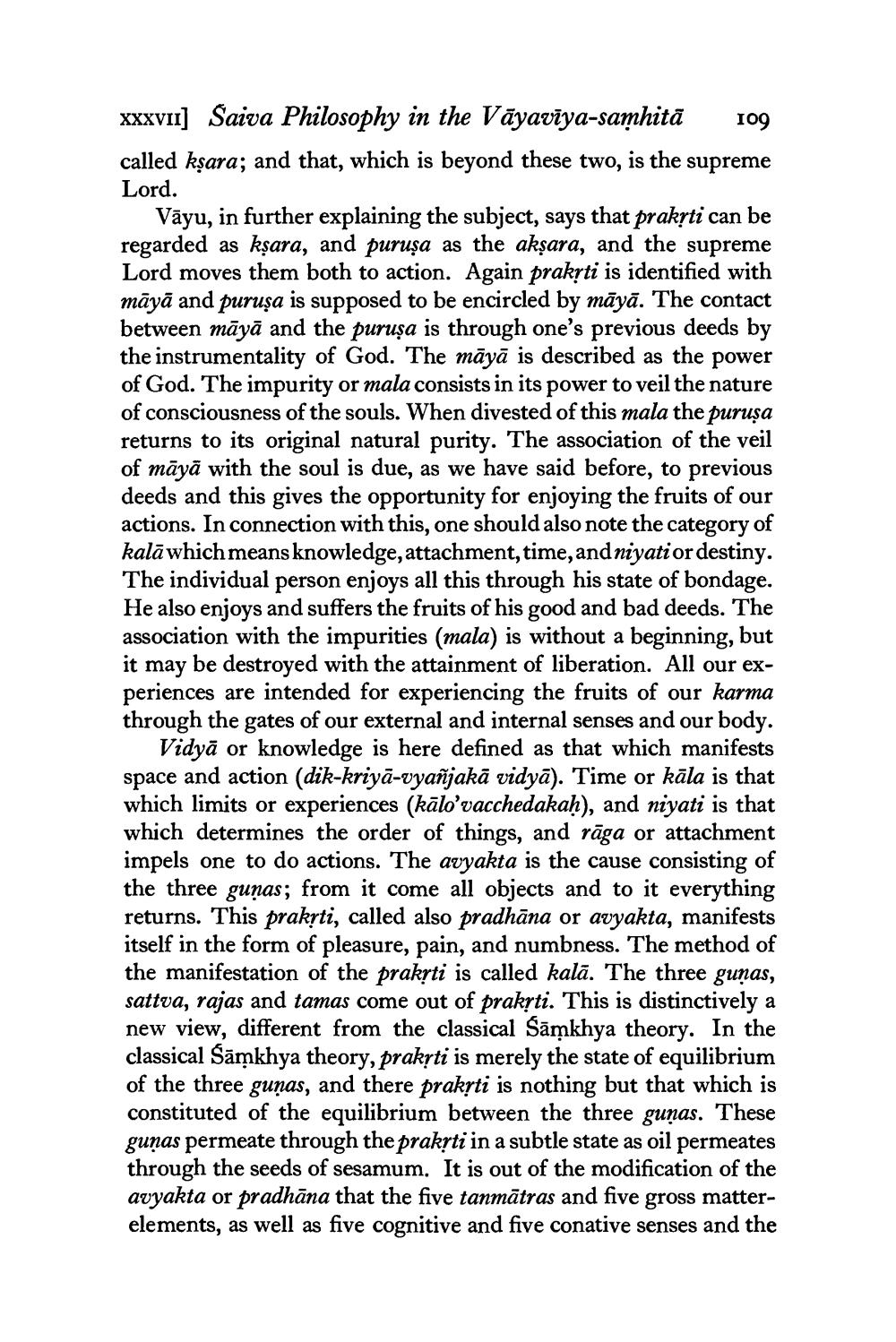________________
XXXVII] Saiva Philosophy in the Vāyavīya-samhitā 109 called kşara; and that, which is beyond these two, is the supreme Lord.
Vāyu, in further explaining the subject, says that prakrti can be regarded as kşara, and puruşa as the akşara, and the supreme Lord moves them both to action. Again prakrti is identified with māyā and puruşa is supposed to be encircled by māyā. The contact between māyā and the puruşa is through one's previous deeds by the instrumentality of God. The māyā is described as the power of God. The impurity or mala consists in its power to veil the nature of consciousness of the souls. When divested of this mala the puruşa returns to its original natural purity. The association of the veil of māyā with the soul is due, as we have said before, to previous deeds and this gives the opportunity for enjoying the fruits of our actions. In connection with this, one should also note the category of kalāwhich means knowledge, attachment, time, and niyati or destiny. The individual person enjoys all this through his state of bonda He also enjoys and suffers the fruits of his good and bad deeds. The association with the impurities (mala) is without a beginning, but it may be destroyed with the attainment of liberation. All our experiences are intended for experiencing the fruits of our karma through the gates of our external and internal senses and our body.
Vidyā or knowledge is here defined as that which manifests space and action (dik-kriyā-vyañjakā vidyā). Time or kāla is that which limits or experiences (kālo'vacchedakaḥ), and niyati is that which determines the order of things, and rāga or attachment impels one to do actions. The avyakta is the cause consisting of the three guņas; from it come all objects and to it everything returns. This prakrti, called also pradhāna or avyakta, manifests itself in the form of pleasure, pain, and numbness. The method of the manifestation of the prakrti is called kalā. The three guņas, sattva, rajas and tamas come out of prakşti. This is distinctively a new view, different from the classical Sāņkhya theory. In the classical Sāmkhya theory, prakyti is merely the state of equilibrium of the three guņas, and there prakrti is nothing but that which is constituted of the equilibrium between the three gunas. These gunas permeate through the prakrti in a subtle state as oil permeates through the seeds of sesamum. It is out of the modification of the avyakta or pradhāna that the five tanmātras and five gross matterelements, as well as five cognitive and five conative senses and the




